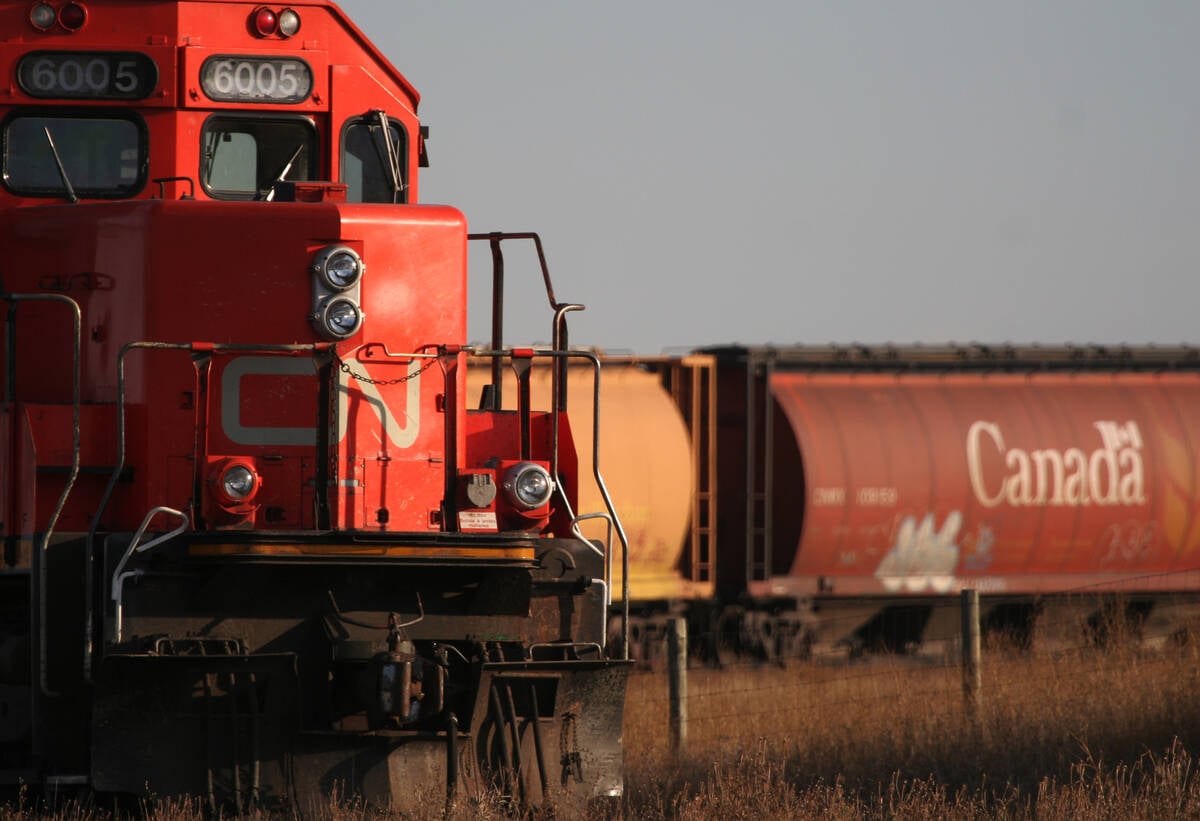A combination of rain, snow and frost is causing downgrading of crops in northern Saskatchewan and Alberta.
“We won’t see much No. 1 wheat anymore,” said Jason Skinner, chief executive officer of North West Terminal in Unity, Sask.
“It will all be at least downgraded to a two if not a three or feed in some cases. So it’s going to reduce quality significantly.”
He estimates farmers in the Unity area had combined 10 to 15 percent of their crops as of Sept. 24. Growers north of that were even further behind.
Read Also

Working groups established to address challenges in the containerized and bulk movement of commodities
CN is working with the pulse and special crops sector on resolving challenges in shipping those commodities.
“It just seems like every couple of days guys can get on the field for a few days and then we get some more rain and then they’ve got to quit. It’s challenging,” said Skinner.
He is more concerned about the cereals than the oilseeds.
“Canola will weather well but we’re starting to see wheat getting downgraded due to things like mildew. Obviously, some of the later wheat will get frost in it as well. When you get it wet for this long, sprouting becomes an issue,” said Skinner.
It is a similar situation one province over in Alberta where it started with an early frost followed by excessive September rain and snowfall.
Quality is going to be a “huge” issue in 2018, said Brent Konstapel, a director with Alberta Barley who farms north of Spirit River.
“Anyone that’s trying to grow malt in this area has gone out the window. It’s all feed,” he said.
The wheat crop will range from a No. 2 to feed. And there could be mould in the peas.
Snow flattened some of the wheat and barley crops, which is going to make them difficult to combine causing some yield loss, said Konstapel.
Bruce Burnett, director of markets and weather with Glacier MarketsFarm, said harvest has to resume in earnest to determine the full extent of the damage but there is no doubt crops in the northern Prairies have taken a hit.
“Certainly this is not great for quality in any way, shape or form,” he said.
The earlier harvest was top notch quality and there were initially concerns that there wouldn’t be enough feed quality crop. That is no longer an issue, at least in the north.
Cereal crops are the most vulnerable to the wet conditions but he is also worried about frost damage on late-seeded canola crops.
Burnett said the cereals are going to come off tough due to declining daylight and cool conditions.
Skinner said it is a good year for North West Terminal to be unveiling its new state-of-the-art grain dryer that can dry in excess of 3,500 bushels per hour, or three times what the old dryer could manage.
“There’s going to be a trend towards larger dryers at grain elevators just to deal with years like this,” he said.
Western Canada’s grain handling system considers dry to be 14.5 percent moisture content in wheat and 10 percent in canola. Growers are going to struggle to meet those specifications this year.
But a lot of customers in places like Indonesia, south China and Japan want 13.5 percent moisture content wheat and 9.5 percent canola because it makes it easier to store the grain in humid regions of the world.
North West Terminal has put programs in place encouraging farmers to start harvesting their crops earlier and allowing the grain elevator to dry their grain down to customer specifications.
















